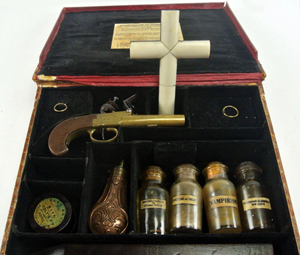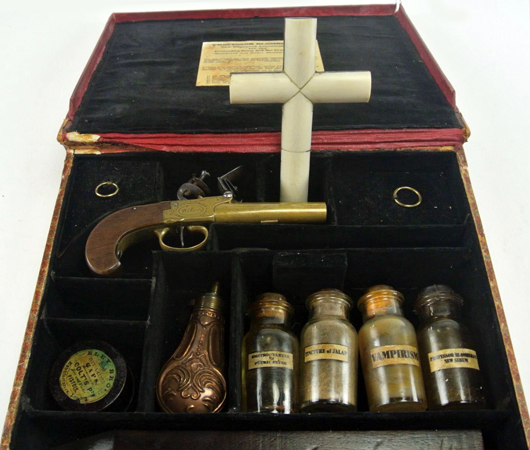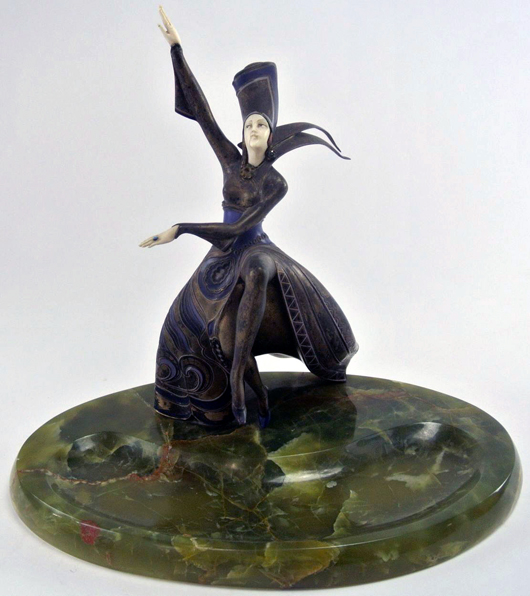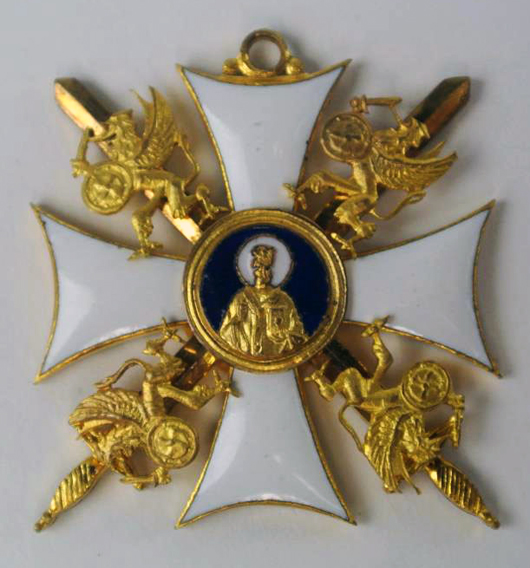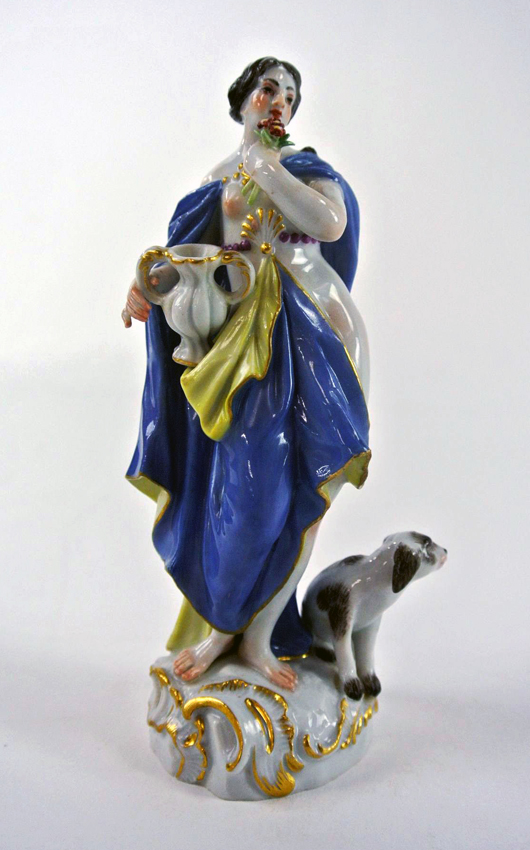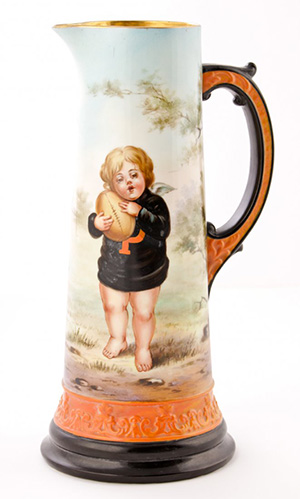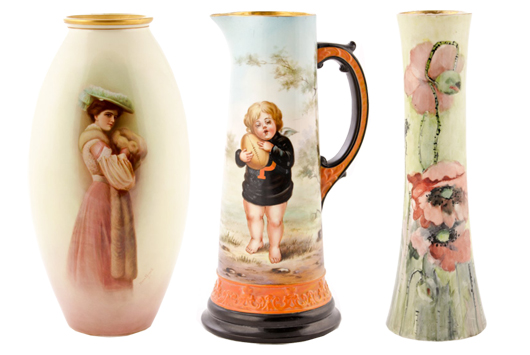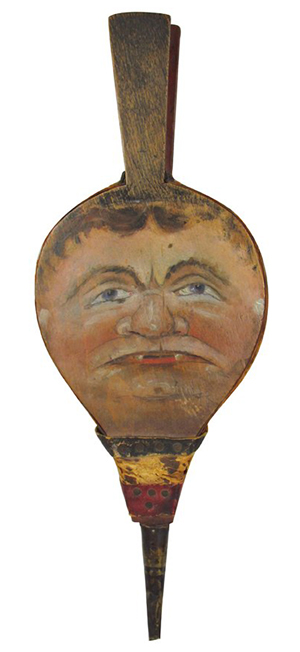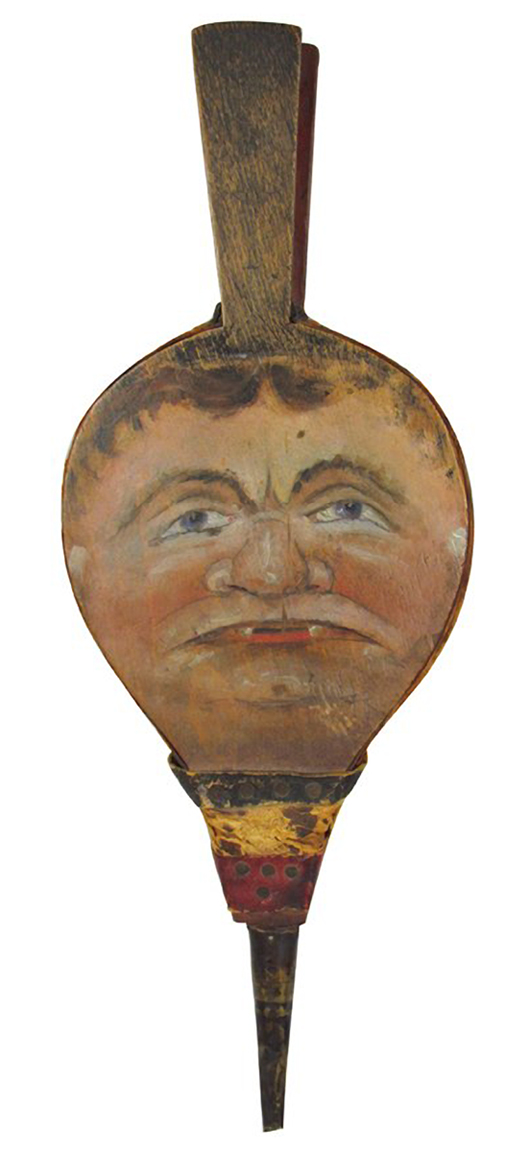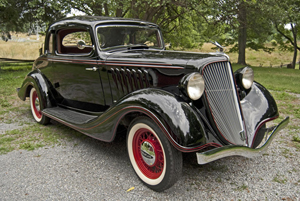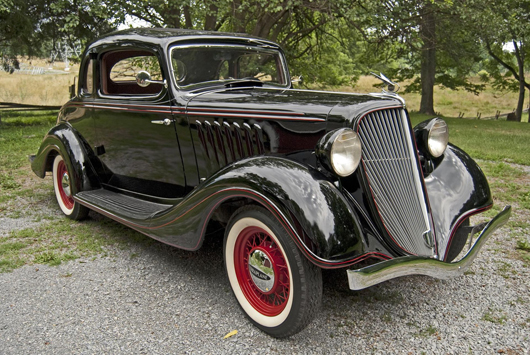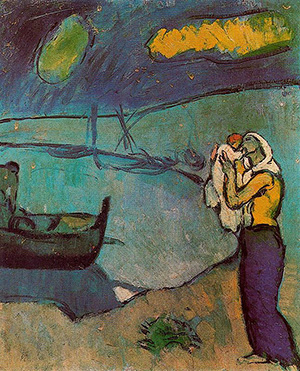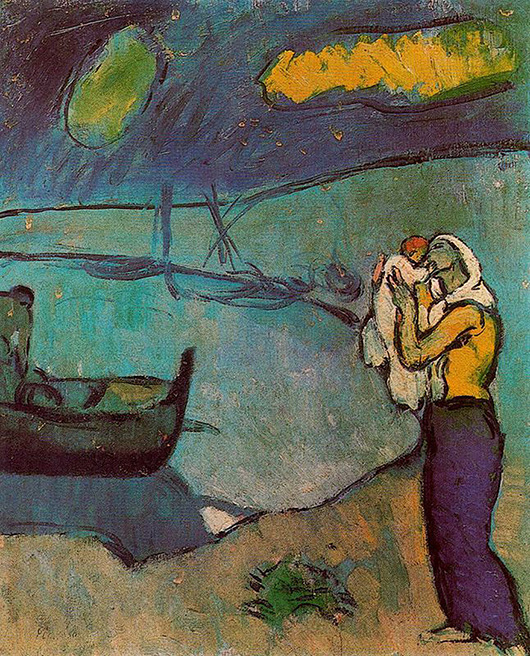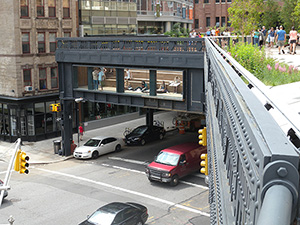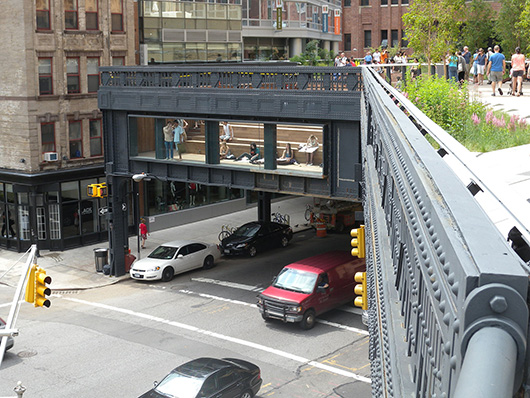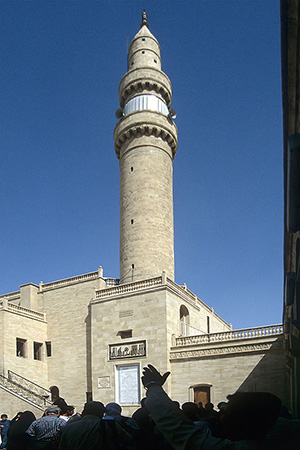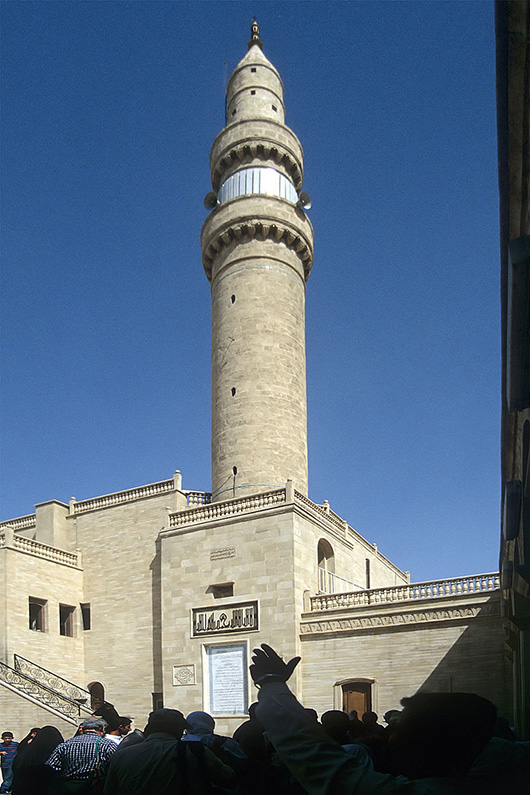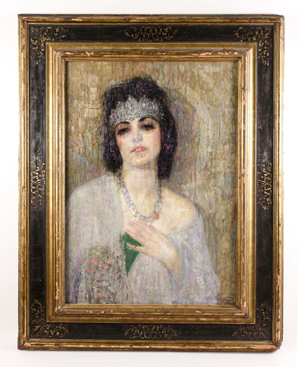
Signed oil on wood panel by the Armenian-American artist Hovsep Pushman (1877-1966), titled ‘Sacred Lotus of the Nile.’ Estimate: $30,000-$50,000. Ahlers & Ogletree image. ATLANTA – Four original oil paintings from the renowned James Cowan Collection of fine artwork, gathered in the early part of the last century and mostly housed at a museum in Nashville, have been added to Ahlers & Ogletree’s already loaded two-day fall estates auction slated for Oct. 4-5. LiveAuctioneers.com will facilitate Internet live bidding.
The artworks are by the Armenian-American artist Hovsep Pushman (1877-1966), American artist Lillian Mathilde Genth (1876-1953), Dutch-American artist Willem Van Den Berg (1886-1970); and British-Italian painter Henry King Taylor (1799-1869). The works will blend nicely with the high-end furniture pieces and decorative accessories already in the sale.
The signed oil on wood panel by Pushman is seen as the strongest piece of the group, with a presale estimate of $30,000-$50,000. Titled Sacred Lotus of the Nile, the 28-inch-by-20-inch work (minus the original gilt and ebonized frame) depicts a woman at bust length with dark hair and wearing a jeweled tiara, necklace and emerald-green camisole, with Asian sculptural objects. The back of the work is inscribed with the title, and has a stamp from a photography studio in Aurora, Ill., where Cowan lived. The back also has a possible inventory number (“3A”).
Pushman was born in Asia Minor. When he was still in his teens his family emigrated to Chicago, where he studied Chinese culture, immersing himself in Asian art – a subject that was to become his forte. Pushman studied in Paris and toured the Orient, and was best known for his contemplative still lifes and sensitive portraits of women, such as the painting in this auction.
The oil on canvas painting by Henry King Taylor, titled Marine Painting with Promontory, is an apparently unsigned attribution, but with a pencil inscription “H.K. Taylor.” The work depicts schooners on a tumultuous and choppy sea, with two standing male figures. Measuring 16 inches by 24 inches (minus frame) the painting is expected to hit $8,000-$12,000.
Taylor was a master at the tricky genre of maritime paintings. He lived and was active in both Italy and the United Kingdom, which made him something of an anomaly in the art world, and his paintings today are highly sought after. In February 2007 one of his ships-at-sea works, titled Mount Orgueil Castle, Jersey, was sold through Bonhams in London for $27,774.
Lillian Mathilde Genth’s signed oil on board, titled Oldest Water Fountain, Tangier (est. $2,000-$4,000), depicts an Orientalist Tangier, Morocco cityscape, loosely and expressively rendered with Moorish architecture and figures in turbans and other traditional dress. The frame holding the 9 3/4-inch-by-13 3/4-inch painting displays the artist’s name and the title plaque on the bottom.
Genth was born in New York and died in Philadelphia, but she traveled the world in between. She was known early on for her paintings of female nudes in landscapes, but later in her career – around 1928 – she started painting scenes of her many travels, which took her to Spain, North Africa, Japan, China, Fiji, Bali, New Guinea and Thailand, where she did a portrait of the king.
The 16 1/2-inch-by-13 1/4-inch (minus the frame) oil on canvas painting by Willem Van Den Berg, titled Child with Fishbowl, carries a modest estimate of $1,500-$3,000. The painting, signed lower right, is a figural work, depicting a child wearing a large white collar over a black top holding a glass fish bowl with bright orange goldfish swimming inside the bowl.
Van Den Berg was Dutch-born, but he split his time between Holland and the United States, where his work was exhibited at the Art Institute of Chicago in 1935. He also studied in Paris, at the Barbizon School. His oeuvres included still lifes and figural paintings, as well as portraits and landscapes, but he’s probably best known for his images of peasants, farmers and fishermen.
Eager bidders will find the paintings’ provenance nearly as tantalizing as the desirable artworks themselves. In 1927, the city of Nashville received an anonymous donation of fine art – dozens of paintings that became the signature collection of the city’s new art museum at the Parthenon, a copy of the Greek temple built for an exposition in a Centennial Park in downtown Nashville.
It was revealed that the paintings had been given to the city by James M. Cowan, a wealthy insurance executive from Illinois with deep family ties to Tennessee. Cowan donated a total of 63 paintings to the museum, but that was less than a tenth of the estimated 700 works of art that he’d collected. Cowan had no children and the collection was broken up following his death.
Various nieces and nephews inherited the bulk of the estate. Dr. Kirven Weekley, a lineal descendant of Cowan, is the consignor of the paintings in the Ahlers & Ogletree auction. His maternal grandfather was Cowan’s nephew, and he acquired them through inheritance. His decision to part with the paintings presents a rare opportunity for serious collectors of fine art.
The auction was already packed with fine American and French furniture, a collection of antique Persian rugs, watches and other estate jewelry, landscape paintings by noted Austrian artists, scientific objects in excellent condition, sterling silver, Flora Danica china, decorative objects and a great selection of items from private collections out of Florida, Atlanta and St. Louis.
More than 1,000 quality, mostly fresh-to-the-market lots will cross the auction block, in a wide array of categories.
Inquiries regarding bidding or the auction may be made via e-mail (bids@aandoauctions.com) or by phone, at 404-869-2478.
ADDITIONAL LOTS OF NOTE

Signed oil on wood panel by the Armenian-American artist Hovsep Pushman (1877-1966), titled ‘Sacred Lotus of the Nile.’ Estimate: $30,000-$50,000. Ahlers & Ogletree image. 
Unsigned oil on canvas attributed to Henry King Taylor (British, 1799-1869), titled ‘Marine Painting with Promontory.’ Estimate: $8,000-$12,000. Ahlers & Ogletree image. 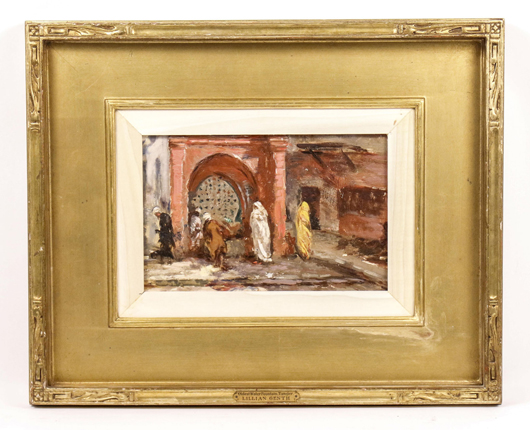
Signed oil on board by Lillian Mathilde Genth (American, 1876-1953), titled ‘Oldest Water Fountain, Tangier.’ Estimate: $2,000-$4,000. Ahlers & Ogletree image. 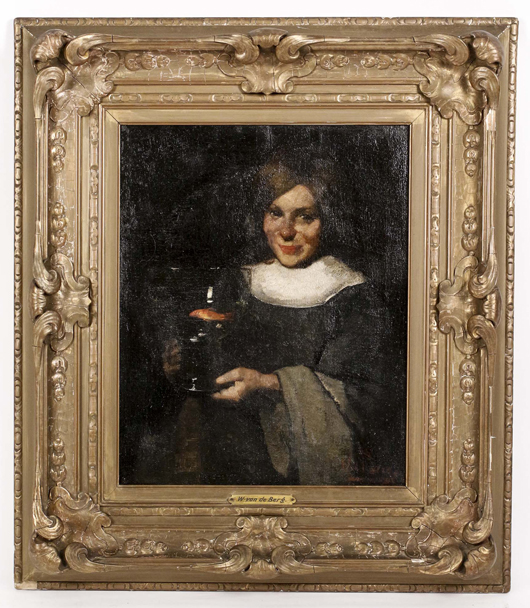
Signed oil on canvas painting by Dutch-American artist Willem Van Den Berg, titled ‘Child with Fishbowl.’ Estimate: $1,500-$3,000. Ahlers & Ogletree image.


